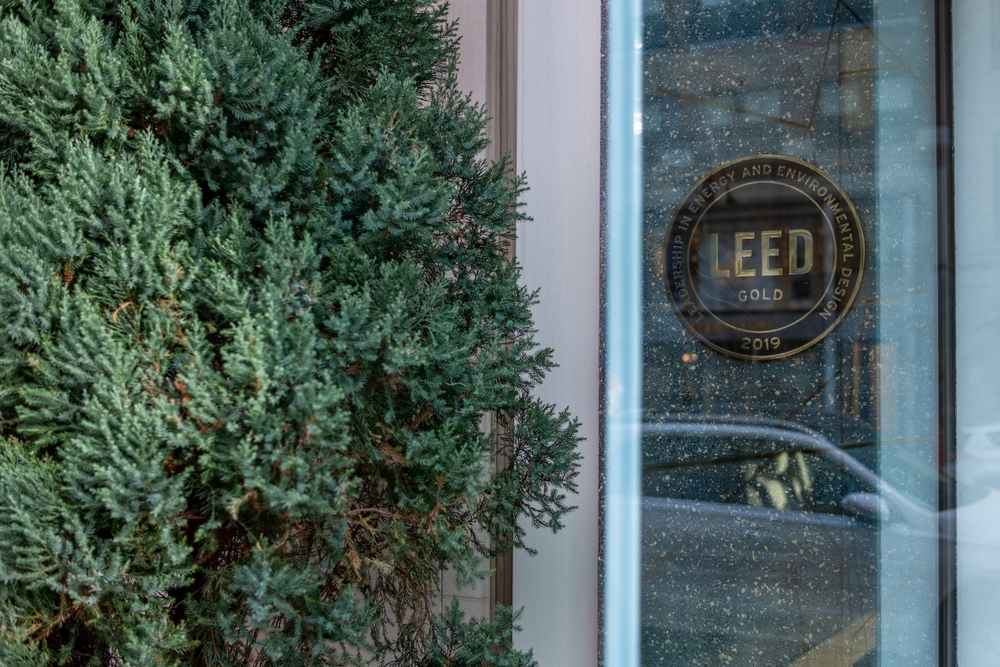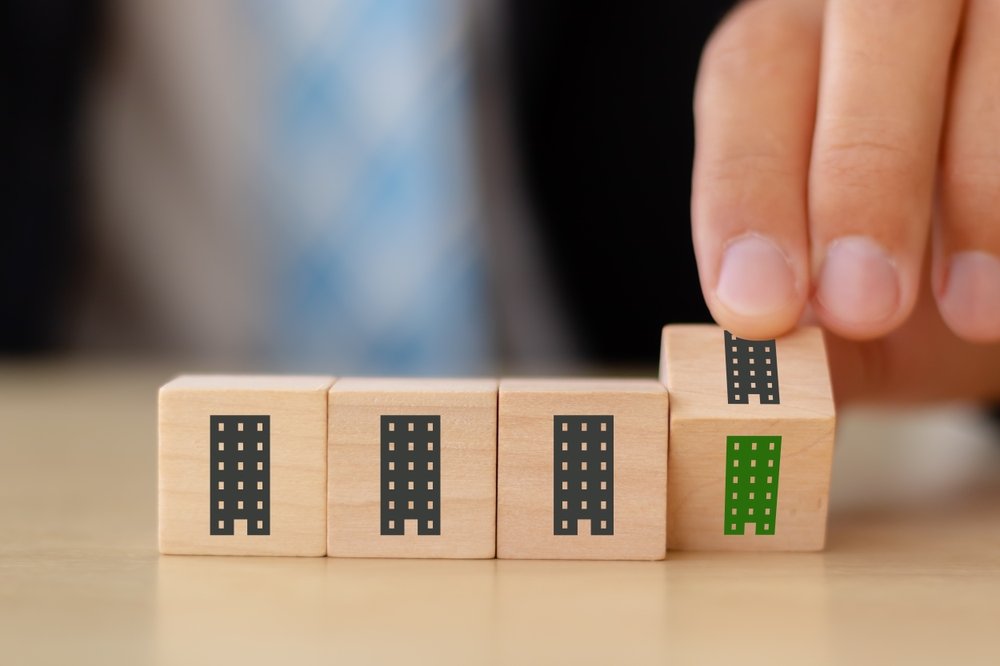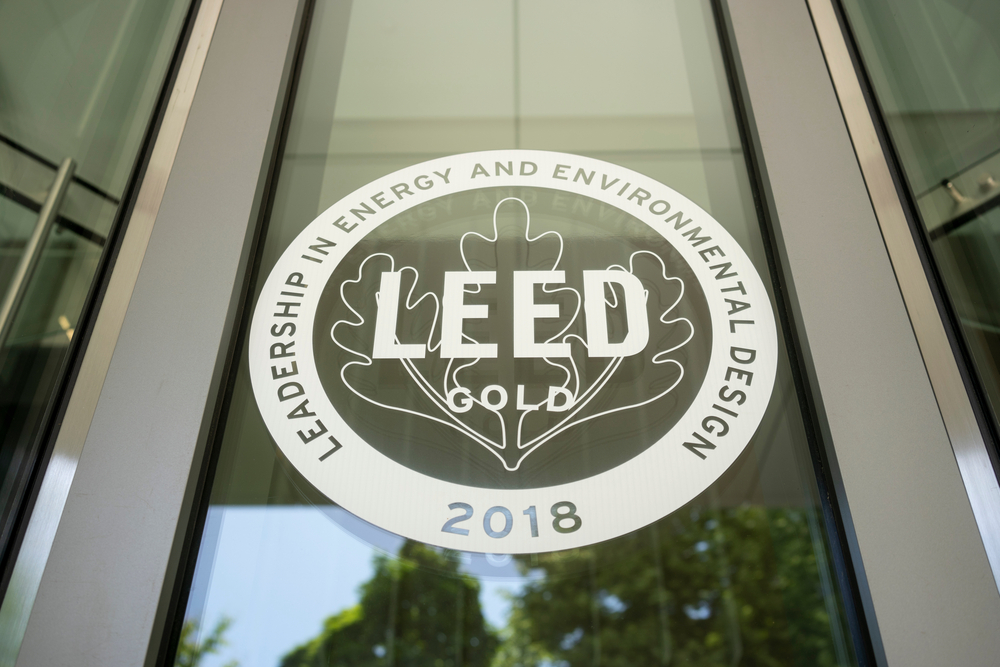
What is LEED certification, and how do you get it?
LEED, which stands for Leadership in Energy and Environmental Design, is a globally recognized certification system that provides a framework for healthy, highly efficient, and cost-saving green buildings. Developed by the U.S. Green Building Council (USGBC), LEED certification is a symbol of sustainability achievement and leadership. It evaluates the environmental performance of a building and encourages market transformation towards sustainable design. The certification process assesses buildings in several key areas, including energy usage, water efficiency, indoor environmental quality, and materials selection. By adhering to these criteria, buildings can earn points that contribute to different levels of certification, ranging from Certified to Silver, Gold, and Platinum.
In this story
Importance and Benefits
The importance of LEED certification extends beyond the environmental benefits, offering significant advantages to building owners, occupants, and the broader community. Firstly, LEED-certified buildings often result in lower operating costs due to reduced energy and water usage. This efficiency not only decreases utility expenses but also enhances the overall value of the property. Furthermore, LEED buildings are designed to provide healthier indoor environments, which can improve occupant well-being and productivity. Enhanced air quality, natural lighting, and the use of non-toxic materials contribute to a healthier space, reducing absenteeism and increasing satisfaction among building users.
From an environmental perspective, LEED certification plays a crucial role in mitigating climate change. By promoting practices that reduce greenhouse gas emissions and conserve natural resources, LEED-certified projects contribute to sustainable development goals. The certification also encourages innovation in building design, construction, and operation, driving the adoption of cutting-edge technologies and practices.
Moreover, LEED certification enhances a building’s marketability, as sustainability becomes an increasingly important consideration for investors, tenants, and consumers. Many organizations and individuals now prefer certified spaces due to their commitment to environmental responsibility and operational efficiency. As a result, obtaining LEED certification can provide a competitive edge in the real estate market, attracting tenants willing to pay a premium for green spaces.
Understanding LEED Certification

History and Development
The LEED certification system was established in 1998 by the U.S. Green Building Council (USGBC) as a response to growing environmental concerns and the need for a standardized approach to sustainable building practices. Initially developed to serve the U.S. market, LEED rapidly gained international recognition as a benchmark for environmentally responsible construction. Its creation was driven by a desire to promote practices that reduce the environmental impact of buildings while enhancing occupant health and productivity. Over the years, LEED has evolved to address various types of projects, including new construction, existing buildings, interior fit-outs, and even entire neighborhoods. This evolution reflects an ongoing commitment to adapting to advancements in technology and changes in environmental priorities. As a result, the LEED system has been continuously updated, with each version refining its criteria to incorporate the latest sustainable design and operational practices.
LEED Rating Systems
LEED certification is structured around specific rating systems that cater to different project types and scopes. These include LEED for Building Design and Construction (BD+C), LEED for Interior Design and Construction (ID+C), LEED for Building Operations and Maintenance (O+M), LEED for Neighborhood Development (ND), and LEED for Homes. Each system is tailored to address the unique challenges and opportunities associated with various building and project types. Within these systems, projects earn points across several categories, such as energy efficiency, water usage, materials selection, indoor environmental quality, and innovation in design. The points are then totaled to determine the project’s level of certification. This approach allows LEED to provide a comprehensive framework for evaluating and improving the sustainability of a wide range of building projects, from single-family homes to large commercial developments.
Levels of Certification
LEED certification is awarded at four distinct levels: Certified, Silver, Gold, and Platinum. These levels correspond to the number of points a project earns during the certification process. A Certified rating requires the fewest points, while a Platinum rating signifies the highest level of achievement in sustainable building practices. The tiered certification system not only recognizes varying degrees of sustainability efforts but also encourages projects to strive for higher levels of environmental performance. By aiming for higher certification levels, project teams are motivated to implement more advanced and innovative strategies, further reducing their environmental impact. This tiered approach provides a clear pathway for continuous improvement, allowing projects to set ambitious goals and track their progress in achieving them. As such, LEED certification serves as both a benchmark for excellence and a catalyst for ongoing innovation in sustainable building practices.
Requirements for LEED Certification
Prerequisites
To achieve LEED certification, projects must first meet a set of mandatory prerequisites. These prerequisites are foundational requirements that ensure a minimum level of sustainability performance is achieved. They vary depending on the specific LEED rating system being used and are designed to address essential areas such as energy use, water efficiency, and indoor environmental quality. For example, a common prerequisite might include adhering to minimum energy performance standards or implementing basic water conservation measures. These prerequisites serve as a baseline, ensuring that all LEED-certified projects uphold fundamental sustainability principles before even considering additional credits.
Categories and Credits
Once the prerequisites are met, projects can earn points through various categories that reflect key aspects of sustainability. These categories include Sustainable Sites, Water Efficiency, Energy and Atmosphere, Materials and Resources, Indoor Environmental Quality, Innovation, and Regional Priority. Each category comprises specific credits, with each credit representing a particular strategy or performance target. The credits are designed to encourage projects to pursue a wide range of sustainable practices, from using renewable energy sources to selecting sustainable building materials. The total number of points achieved from these credits determines the project’s level of certification, with higher points leading to higher certification levels. This flexible system allows project teams to prioritize strategies that align with their specific goals and context, promoting tailored approaches to sustainability.
Documentation and Compliance
A critical component of the LEED certification process is the rigorous documentation and compliance required to validate the project’s adherence to the prerequisites and credits. Project teams must compile detailed evidence demonstrating how each prerequisite and credit has been met. This documentation typically includes plans, specifications, calculations, and photographs, along with narratives explaining the sustainability strategies employed. Compliance is verified through a review process conducted by the Green Business Certification Inc. (GBCI), an independent third-party organization. This review ensures that all submissions align with LEED standards and that the claimed sustainability measures have been implemented effectively. The thorough documentation and compliance process not only assures the integrity of the certification but also provides a valuable record of the project’s sustainability journey, offering insights and lessons that can be applied to future endeavors.
Steps to Obtain LEED Certification

Project Registration
The journey to obtaining LEED certification begins with project registration. This initial step involves registering the project with the U.S. Green Building Council (USGBC) through their online platform. Registration provides access to resources and tools needed to guide the project through the certification process. It also establishes the project within the LEED system, allowing for the official tracking of progress. During registration, project teams must select the appropriate LEED rating system that aligns with their project type, whether it be new construction, existing buildings, or another category. This step is crucial as it sets the foundation for the entire certification process.
Credit Selection and Planning
Following registration, the project team engages in credit selection and planning. This phase involves a thorough review of the available LEED credits to identify which are most applicable and achievable for the specific project. The team evaluates each credit’s requirements and determines how these align with the project’s sustainability goals, budget, and timeline. This strategic planning is essential for maximizing the project’s point potential and achieving the desired level of certification. The team must also ensure that all mandatory prerequisites are met before pursuing additional credits. During this stage, collaboration among architects, engineers, and sustainability consultants is vital to develop a comprehensive approach that incorporates best practices and innovative solutions.
Application Submission
Once the project team has implemented the necessary strategies and gathered the required documentation, they proceed with the application submission. This involves compiling all evidence of compliance with the selected prerequisites and credits into a detailed application package. The documentation typically includes project drawings, specifications, calculations, and narratives that demonstrate how each requirement has been satisfied. The application is then submitted through the USGBC’s online platform for review. During this phase, attention to detail is critical, as incomplete or inaccurate submissions can delay the certification process.
Review and Approval Process
The final step in obtaining LEED certification is the review and approval process, conducted by the Green Business Certification Inc. (GBCI). This independent third-party review ensures that all submitted documentation aligns with LEED standards and verifies the implementation of claimed sustainability measures. The review process may involve several rounds of clarification and communication between the project team and the GBCI reviewers to address any questions or discrepancies. Once the review is complete and all criteria are satisfied, the project is awarded its LEED certification level, ranging from Certified to Platinum based on the total points earned. This certification not only recognizes the project’s commitment to sustainability but also provides a valuable benchmark for future green building initiatives.
Maintaining LEED Certification

Recertification Process
Once a building achieves LEED certification, maintaining that status requires a commitment to ongoing performance and sustainability. The recertification process is crucial for projects initially certified under the LEED for Building Operations and Maintenance (O+M) system. Recertification ensures that the building continues to operate at a high level of environmental performance and adheres to LEED standards over time. Typically, recertification is required every five years, although some projects may choose to pursue it more frequently. The process involves re-evaluating the building’s performance metrics, such as energy and water usage, indoor environmental quality, and waste management practices. This periodic assessment not only helps maintain the building’s certification status but also identifies opportunities for further improvements and efficiencies.
Upgrading Certification Levels
In addition to maintaining certification, project teams may seek to upgrade their LEED certification to a higher level—such as from Silver to Gold or Gold to Platinum—as they implement new strategies and technologies. This upgrading process involves revisiting the LEED scorecard to identify new credits that can be achieved with additional improvements or innovations. For instance, integrating renewable energy sources, enhancing water conservation measures, or adopting advanced building management systems can contribute to earning more points. Upgrading LEED certification levels not only enhances the building’s environmental performance but also increases its market value and appeal to tenants and investors. It serves as a testament to the building’s ongoing commitment to sustainability and leadership in green building practices.
Continuous Improvement
Central to maintaining LEED certification is the principle of continuous improvement. LEED encourages projects to consistently assess and enhance their sustainability practices, fostering a culture of innovation and environmental stewardship. Continuous improvement involves regularly monitoring and analyzing building performance data to identify trends, inefficiencies, and areas for enhancement. It requires a proactive approach, where building managers and sustainability teams collaborate to implement new technologies, refine operational procedures, and engage occupants in sustainability initiatives. By embracing continuous improvement, buildings can adapt to changing environmental standards and technological advancements, ensuring they remain at the forefront of sustainable design and operation. This approach not only preserves the integrity of the LEED certification but also significantly contributes to the broader goals of reducing environmental impact and promoting sustainable development in the built environment.
Conclusion
LEED certification offers a multitude of benefits that extend beyond environmental sustainability, making it a valuable asset for building owners, occupants, and the community at large. At its core, LEED certification promotes significant reductions in energy and water usage, contributing to lower operating costs and a smaller carbon footprint. These efficiencies not only enhance the building’s economic value but also demonstrate a commitment to environmental stewardship. LEED-certified buildings often provide healthier indoor environments, with improved air quality and natural lighting, which can boost occupant well-being and productivity. Furthermore, LEED certification enhances marketability by attracting tenants and investors who prioritize sustainability and corporate responsibility. As a result, certified buildings often experience higher occupancy rates and command premium rents, underscoring the certification’s role as a strategic investment in long-term asset performance.
Future Trends in LEED Certification
As the demand for sustainable building practices continues to grow, LEED certification is poised to evolve in response to emerging trends and technological advancements. One significant trend is the increasing integration of smart building technologies, which enable real-time monitoring and optimization of building systems. These technologies can enhance energy efficiency, reduce waste, and improve occupant comfort, aligning with LEED’s objectives and potentially contributing to higher certification levels. Additionally, the focus on resilience in the face of climate change is likely to influence future iterations of LEED, encouraging projects to incorporate adaptive strategies that enhance their ability to withstand environmental challenges.
Another anticipated trend is the expansion of LEED’s global reach, as more countries adopt the certification as a benchmark for sustainable building practices. This international growth may lead to the development of region-specific credits that address local environmental priorities and challenges, further enhancing the relevance and applicability of LEED worldwide.
Moreover, as the understanding of sustainability broadens to encompass social and economic dimensions, LEED may increasingly emphasize equity and community engagement. This evolution could see LEED projects not only reducing environmental impact but also contributing to social well-being and economic vitality in their communities.
In conclusion, LEED certification remains a dynamic force in the pursuit of sustainable development, continuously adapting to meet the changing needs of the built environment. As it evolves, LEED will continue to play a pivotal role in shaping the future of green building practices, driving innovation, and fostering a more sustainable and resilient world.



Leave a Reply